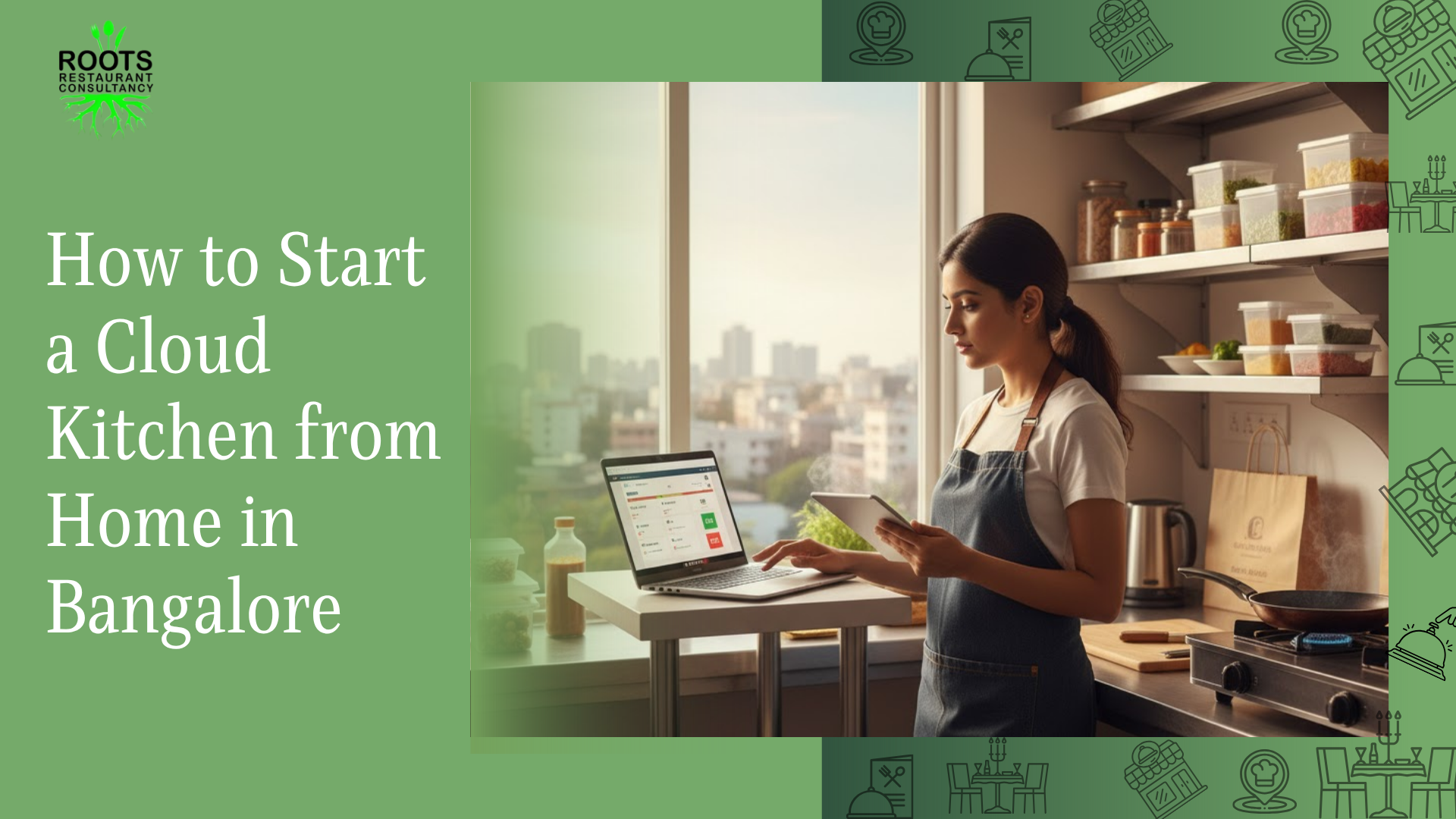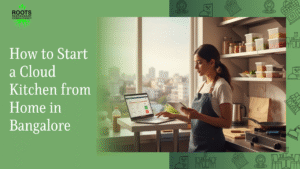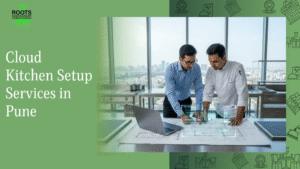A cloud kitchen, also known as a ghost kitchen or virtual restaurant, operates purely on a delivery-based model without a dine-in space. It relies on online food aggregators like Swiggy, Zomato, or Dunzo to reach customers.
The rise of the digital-first consumer and the growth of food delivery apps have made Bangalore one of the most profitable cities for home-based cloud kitchens. Lower rental overheads, minimal staff requirements, and scalable operations make this business model a favorite among first-time entrepreneurs.
If you’re looking to understand how to start a cloud kitchen from home, the good news is — it’s achievable with moderate investment and proper planning.
Why Bangalore Is a Hotspot for Home Cloud Kitchens
Bangalore, India’s startup capital, has a young, tech-savvy population that values convenience, taste, and innovation. The city’s high density of working professionals and students drives daily demand for online food orders.
Key advantages of launching in Bangalore include:
- High adoption of delivery apps
- Diverse cuisine preferences (South Indian, continental, fusion)
- Growing demand for healthy and homemade food
- Access to reliable delivery partners and suppliers
This combination makes Bangalore one of the top markets to experiment with small-scale food entrepreneurship.
Step 1: Research and Define Your Concept
The first step in how to start a cloud kitchen from home is defining your niche and brand identity. Without a clear concept, your business can get lost in the competitive market.
Key actions:
- Identify your target audience — are you catering to students, IT professionals, or families?
- Research trending cuisines and pricing models.
- Define your USP (unique selling proposition) — healthy food, regional cuisine, or premium home meals.
For example:
- “Healthy homemade millet bowls for office lunch”
- “Budget-friendly North Indian thalis for students”
- “Gourmet desserts made at home”
If you’re unsure about your direction, consider expert help in Concept Development and Menu Strategy.
Explore Concept Development Services by Roots Restaurant Consultancy to craft a brand that stands out.
Step 2: Register Your Business and Get the Required Licenses
Operating legally is crucial, even if your business runs from home. Licenses enhance credibility and ensure compliance with local authorities.
Essential Licenses for Cloud Kitchens in Bangalore:
- FSSAI License — mandatory for all food businesses (apply online at fssai.gov.in).
- Shop and Establishment Act Registration — register under your local BBMP jurisdiction.
- GST Registration — if your turnover exceeds ₹20 lakhs annually.
- Fire & Pollution Clearance — required if using gas or heavy equipment.
- Trade License from the local municipal authority.
Licensing can be overwhelming for new entrepreneurs, but consultants can simplify this process.
Roots Restaurant Consultancy provides guidance under their Operational Diagnostics & Setup Services, ensuring compliance from day one.
Step 3: Setting Up Your Home Kitchen for Commercial Use
A cloud kitchen setup at home doesn’t require a massive investment but should follow food safety and efficiency principles. Your goal is to design a compact yet productive kitchen.
Kitchen Setup Checklist:
- Adequate space (minimum 100–150 sq. ft.)
- Segregated cooking and packaging zones
- Proper ventilation and exhaust system
- Industrial-grade stove and storage racks
- Refrigerator and deep freezer for perishables
- Stainless steel workstations for hygiene
- Food-safe containers and packaging materials
Roots Restaurant Consultancy offers Kitchen Design and Setup Services to help you create layouts that enhance productivity and meet regulatory standards.
Step 4: Menu Engineering and Food Costing
Your menu determines your success. Avoid the temptation to serve everything. A focused menu improves efficiency and brand clarity.
Menu Development Tips:
- Keep your menu short—10–12 high-margin items to start.
- Choose dishes that travel well and retain taste after delivery.
- Highlight signature items to build brand recognition.
- Balance variety with ease of preparation.
Use menu engineering principles — track food cost percentage, popularity, and profitability for each dish.
Roots Restaurant Consultancy’s Menu Development Services help you design profitable, customer-friendly menus aligned with delivery models.
Step 5: Source Quality Ingredients and Packaging
Home-based kitchens thrive on freshness and consistency. Partner with reliable vendors for ingredients, spices, and packaging.
Tips:
- Build relationships with local suppliers for daily produce.
- Source eco-friendly packaging (kraft bowls, paper boxes, biodegradable cutlery).
- Customize packaging with your brand logo and QR code for feedback.
Packaging is a silent marketing tool—it creates the first impression when your food arrives.
Step 6: Choose Delivery Channels and Technology
After your kitchen setup, register your business on leading food aggregators like Zomato, Swiggy, and UberEats. You can also accept direct orders via WhatsApp, Instagram, and Google My Business.
Best Practices for Delivery:
- Upload professional food photos with SEO-friendly descriptions.
- Maintain a consistent average rating above 4.3 for better visibility.
- Use POS (Point of Sale) software to manage orders and inventory.
For operational efficiency, you can consult experts offering Revenue Generation and Growth Services to streamline your business digitally.
Step 7: Build a Strong Brand Identity
A memorable brand helps you stand apart from competitors.
Focus on naming, logo design, packaging, and customer experience.
Branding Tips:
- Choose a name that reflects your cuisine and is easy to recall.
- Maintain a consistent tone and color palette on social media.
- Include a short thank-you note with each delivery.
Invest in storytelling — share your journey and values. People love ordering from relatable home chefs with a story.
Step 8: Marketing and Promotion Strategies
Learning how to start a cloud kitchen from home isn’t complete without mastering marketing.
Effective Ways to Market Your Home Cloud Kitchen:
- Create social media pages on Instagram and Facebook.
- Post behind-the-scenes content, customer testimonials, and menu launches.
- Collaborate with local micro-influencers.
- List on Google My Business with updated contact details and reviews.
- Run geo-targeted ads (e.g., “Best Homemade North Indian Food in Indiranagar”).
For advanced strategy, Roots Restaurant Consultancy’s Revenue Generation Services include growth marketing, pricing psychology, and performance audits.
Step 9: Build Operational SOPs and Train Staff
Even a small home-based cloud kitchen needs defined processes. Create Standard Operating Procedures (SOPs) for order prep, packaging, and delivery.
What to include in your SOPs:
- Recipe standardization
- Food safety protocols
- Cleaning and hygiene routines
- Order fulfillment steps
If you hire additional help, staff training ensures consistency.
Check out Staff Training & Mentoring Services to build an efficient home kitchen team.
Step 10: Cost Planning and Financial Management
Managing finances smartly can make or break your cloud kitchen. Let’s break down typical costs for a home setup in Bangalore:
| Expense Type | Estimated Cost (INR) |
|---|---|
| Kitchen Equipment | ₹60,000 – ₹1,00,000 |
| Licensing & Registrations | ₹15,000 – ₹25,000 |
| Raw Materials (Initial Stock) | ₹30,000 – ₹50,000 |
| Packaging Materials | ₹10,000 – ₹20,000 monthly |
| Marketing and Branding | ₹20,000 – ₹40,000 |
| Delivery Logistics | ₹5,000 – ₹10,000 monthly |
Your total investment can range from ₹1.5–2.5 lakhs, depending on equipment quality and scale.
Use software or simple spreadsheets to track daily sales, food cost percentages, and profit margins.
Step 11: Scaling Your Cloud Kitchen
Once your brand gains traction, consider expanding:
- Launch a second cuisine-focused brand under the same kitchen.
- Move to a shared commercial space for higher order volumes.
- Add direct delivery via your own app or website.
- Introduce subscription-based meal plans for regular customers.
Experts providing External Leadership and Growth Mentorship can guide your scaling phase effectively.
Step 12: Common Mistakes to Avoid
Many new cloud kitchens fail due to avoidable errors. Here’s what to watch out for:
- Overly complex menus that slow operations.
- Ignoring customer reviews on delivery apps.
- No cost tracking — losing profits silently.
- Weak packaging leading to poor presentation.
- No professional guidance during setup.
Investing time in consulting professionals can save money and ensure smoother growth.
Long-Term Success Tips for Your Home Cloud Kitchen
- Maintain consistent food quality and hygiene.
- Gather feedback regularly and act quickly.
- Keep innovating — seasonal or festive menus attract attention.
- Offer loyalty programs or referral discounts.
- Study analytics on Zomato/Swiggy to identify trends.
- Network with local food entrepreneurs and attend culinary events.
Partnering with experienced consultants like Roots Restaurant Consultancy ensures professional support at every stage—from concept to daily operations.
FAQs About Starting a Cloud Kitchen from Home
Q1. What licenses are mandatory to start a home-based cloud kitchen?
You’ll need an FSSAI license, Shop & Establishment registration, and a local trade license to operate legally in Bangalore.
Q2. How much space do I need to start?
A minimum of 100–150 sq. ft. is ideal for small-scale home operations, provided you maintain hygiene and workflow separation.
Q3. What’s the average monthly profit from a cloud kitchen?
Profits vary, but a small kitchen can earn ₹30,000–₹70,000 per month after covering basic expenses, depending on orders and pricing.
Q4. Can I operate only through social media without Swiggy or Zomato?
Yes, but aggregators provide scale and exposure. Start locally, then expand through apps once your operations stabilize.
Q5. Can Roots Restaurant Consultancy help with setup and training?
Absolutely. Their end-to-end consultancy services cover concept creation, kitchen setup, menu planning, operations, and marketing strategies.







